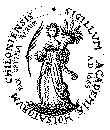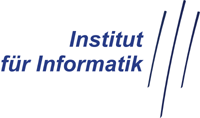The presented thesis deals with the 2D-3D pose estimation problem.
Pose estimation means to estimate the relative
position and orientation of a 3D
object with respect to a reference camera system.
The main focus concentrates on the geometric modeling and application
of the pose problem.
To deal with the different geometric spaces (Euclidean, affine and
projective ones), a homogeneous model for conformal geometry is
applied in the geometric algebra framework. It allows for a compact and linear
modeling of the pose scenario.
In the chosen embedding of the pose problem, a rigid body motion is
represented as an orthogonal transformation whose parameters can be
estimated efficiently in the corresponding Lie algebra.
In addition, the chosen algebraic embedding allows the modeling of extended
features derived from sphere concepts in contrast to point concepts used in
classical vector calculus.
For pose estimation,
3D object models are further treated
two-fold, feature based and free-form based: While the feature based
pose scenarios provide constraint equations to link different
image and object entities, the free-form approach for pose estimation is
achieved by applying extracted image silhouettes from objects
on 3D free-form contours modeled by 3D Fourier descriptors.
In conformal geometric algebra an extended scenario is derived, which
deals beside point features
with higher-order features such as lines, planes, circles, spheres,
kinematic chains or cycloidal curves. This scenario is extended to general
free-form contours by interpreting contours generated with 3D Fourier
descriptors as n-times nested cycloidal curves.
The introduced method for shape modeling links signal
theory, geometry and kinematics and is applied advantageously for 2D-3D silhouette
based free-form pose estimation.
The experiments show the real-time capability and noise
stability of the algorithms. Experiments of a running navigation
system with visual self-localization are also presented.





